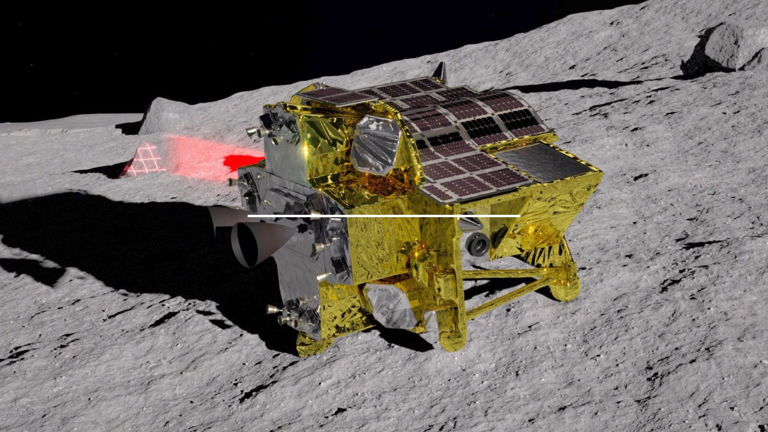Japan's "MOON SNIPER"

The officials stated that it could potentially take up to a month to ascertain the precise whereabouts of the probe.
Japan Aerospace Exploration Agency’s Smart Lander for Investigating Moon (Slim) probe, dubbed the “Moon Sniper”, is thought to been landed on the slope of a crater just south of the lunar equator BY using “pinpoint technology”.
The “Moon Sniper”, called as the Slim probe, developed by the Japan Aerospace Exploration Agency (JAXA), is believed to have successful to touch down on the incline of a crater located south of the lunar equator. This remarkable achievement was made possible through the utilization of advanced “pinpoint technology”.
The solar panels are not producing any power, as stated by Japan’s space agency (Jaxa) during a press conference held after the craft’s landing. This means that the spacecraft is solely relying on its battery, which has a limited lifespan of only a few hours. When asked about the landing’s outcome, Jaxa chief Hitoshi Kuninaka stated that they consider the soft landing itself to be successful since the spacecraft was able to send telemetry data, indicating that most of its equipment was functioning properly. Additionally, the spacecraft managed to capture images of the Moon’s surface before landing. To ensure the transmission of this data back to Earth, certain systems have been shut down to conserve battery power.
The Pinpoint Technology
The precision technology known as pinpoint technology has been effectively utilized by Japan in the successful landing of probes on two asteroids in the past. The designated landing site for the spacecraft was within a 100-meter radius (330 feet) of a specific location on the asteroid’s surface, which is significantly more accurate compared to the usual landing zone spanning several kilometers. JAXA, the Japanese space agency, emphasizes that their highly precise technology will serve as a valuable asset in future explorations of the mountainous regions on the Moon’s poles. These areas are considered potential sources of oxygen, fuel, and water. This relatively successful Moon landing marks a turning point for Japan’s space endeavors, following two unsuccessful lunar missions and recent rocket failures, including incidents of explosions shortly after take-off.

